(CREAX n.v., Belgium)
[Japanese translation by T. Nakagawa is posted in our Japanese page, on Apr. 16, 2003. ]
Editor's
Note
(Toru Nakagawa, Apr. 15, 2003)
It is my great pleasure that the two papers of outstanding accomplishments presented at TRIZCON2003 by Darrell Mann and Simon DeWulf are reposted in this Web site by the courtesy of the Authors. This page contains their Second paper, you can access to their First one by clicking "Updating TRIZ". Please refer to my Personal Report of TRIZCON2003 posted on Apr. 3 and quoted here at the bottom of this page (I wish to guide you directly to their paper). I am very grateful to the Authors and the Altshuller Institute.Authors: Darrell Mann (Director, CREAX nv, Belgium). Email: darrell.mann@creax.com
Simon DeWulf (CEO, CREAX nv, Belgium). Email: simon.dewulf@creax.com
Company: CREAX nv. Belgium: Web site: http://www.creax.com/
Conference: The Altshuller Institue for TRIZ Studies, USA. Web site: http://www.aitriz.org/
| "Updating TRIZ: Patent Analysis", Mann and DeWulf | CREAX Web site | TRIZCON2003, Nakagawa's Personal Report | Japanese
page of this paper |
Updating the Contradiction Matrix
Darrell Mann
Director, CREAX, UK
Phone/Fax: +44 (1275) 342960
E-mail: darrell.mann@creax.comSimon Dewulf
CEO, CREAX n.v., Ieper, Belgium
Phone: +32 57 229480
Fax: +32 57 229481
E-mail: simon.dewulf@creax.com
Abstract
Although the classical Contradiction Matrix remains a conceptually very important element of the TRIZ toolkit, its age often means that users have difficulty using it successfully across a wide range of modern-day problem settings. The paper discusses a systematic programme of patent and science based research that has culminated in the production of a range of new Matrices.In particular, the paper discusses the creation of a new generic Matrix aimed at technical applications. This new Matrix updates both the form and content of the original Matrix by updating and expanding the list of parameters it contains, updating and increasing the Inventive Principle recommendations for each contradiction, and also making it easier for users to connect their specific problem to the generic framework. In the first area, the paper describes how the original list of 39 parameters has now been increased to 50 following extensive discussions with the user community.
The paper also discusses the creation of a number of company and industry-specific Matrix tools based on the mass of research data collected. In keeping with the rapidly growing interest in applying TRIZ principles in the software industry, the paper describes a Matrix specifically aimed at this application area.
The paper concludes with a description of a number of real case study examples showing how the new Matrix forms compares relative to the performance of the classic Matrix in terms of quality of generated solution directions.
1. Introduction
The classical TRIZ Contradiction Matrix is in need of some attention
in order to make it usable my modern day users. The paper describes some
of the output of a programme of systematic research to update and refine
the Matrix. A parallel paper (Reference
[1])
details the form and content of that research programme, while a complete
book (Reference [2]) will detail the full
output of the research and in particular present the full new Matrix in
all of its detail. The aim of this paper is to describe some of the underlying
philosophy behind the structuring of the new Matrix, and also to describe
how the tool fits into a longer-term strategy headed in the direction of
the ‘Ideal Contradiction Matrix’. The paper is segmented into four main
sections. The first section examines a Matrix Explorer – the framework
by which we have been assembling and classifying data acquired from the
patent database. The second section then discusses the definition of the
revised list of parameters that will make up the sides of the new Matrix.
Section three provides details of a few key examples extracted from the
new Matrix. The point here is to highlight some of the changes in the content
of individual boxes in the Matrix that have taken place in the period since
the classical Matrix was constructed. The final section of the paper then
goes on to describe the expected evolution of the new Matrix (and its bespoke
tailored derivatives – including a Matrix aimed specifically at conflict
situations within the software development sector) towards its Ideal Final
Result.
2. Matrix Explorer
The Matrix Explorer is a software framework we have been using to help file the patents we have been analyzing. Although it has been primarily been developed as an internal facilitation tool, it seems that there is a value in making un-interpreted, raw TRIZ data available to users. Specifically, there has been a desire to relate a given pair of conflict parameters not just to a series of Inventive Principle solution suggestions, but also to the specific patents that feature that particular conflict pair.
Figure 1 illustrates the basic configuration of the Matrix Explorer. It has been written in the Java language, and as such is intended to be usable in an on-line form.
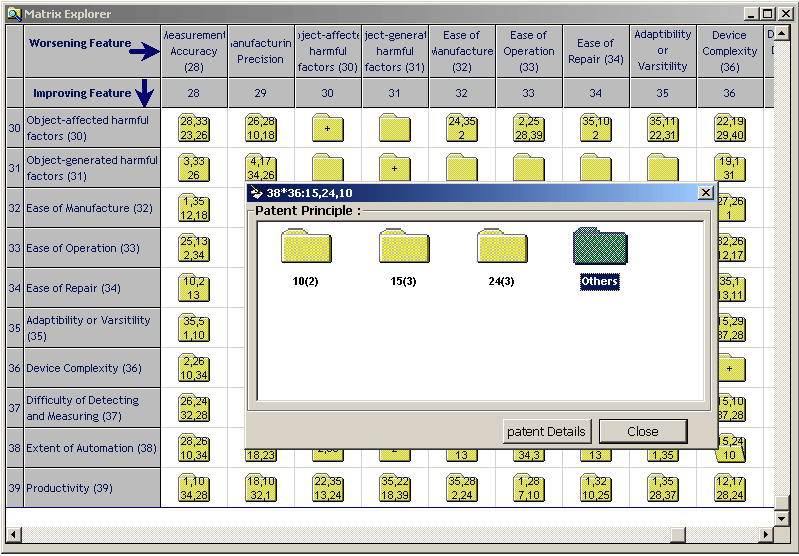
Figure 1: Matrix Explorer Software Tool Screen-Shot
The basic structure contains a number of hyper-links that first enable a user to click onto a particular box within the Matrix to determine what Principles have been used to solve that conflict. This is the view shown in Figure 1 – where we see the Extent of Automation versus Device Complexity conflict pair being opened to illustrate the fact that in addition to finding examples of patents using the Inventive Principles suggested by the Classical Matrix (10, 15 and 24), there are a variety of other patents that have successfully challenged this conflict pair using other Principles. Figure 2 illustrates the consequence of hyper-linking from this ‘other’ folder. It may be observed that a new screen opens up. This screen contains further hyperlinks to the specific patents that involve the conflict pair under consideration. Not shown on the screen due to lack of space, the screen containing the hyper-links to the patent database, also describe the Inventive Principles used by each of the patents listed.
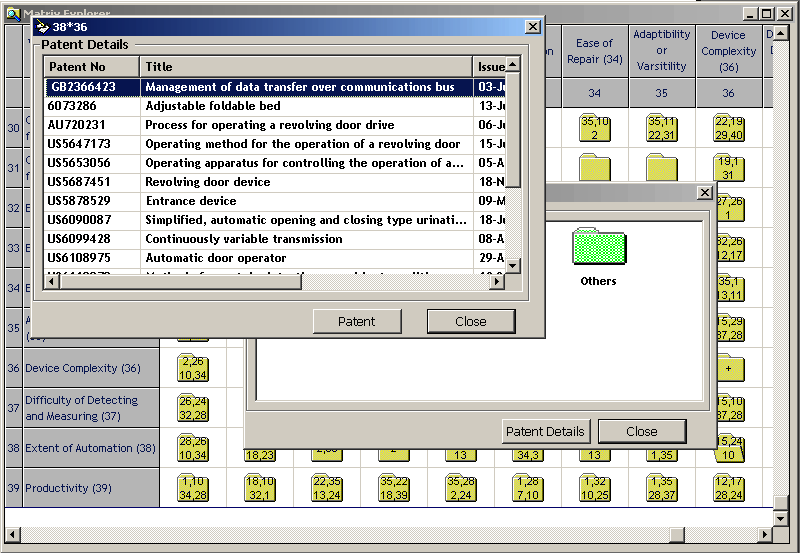
Figure 2: Matrix Explorer Software Tool – Hyperlinks to Patent Database
The screen-shots shown in these two figures illustrate the form of the
Matrix when using the 39 parameters as described in classical TRIZ. The
next section describes the alternative structuring of these and other new
parameters in the new Matrix structure.
3. New Matrix Parameters
The principle guiding features we used when determining the form of any new Matrix structure were a) to include parameters that were not adequately addressed in the original Matrix (specifically those parameters were not considered to be important when that matrix was devised), and b) to re-sequence the parameters into a more logical and informative sequence. With regard to the first issue, it is evident from the original Matrix – and specifically the ‘Amount of Information’ parameter (for which the Matrix contains many blank entries) – that the growth of Matrix is a story of a gradually unfolding world of innovation in which new parameters become important in the design process. Issues like safety, noise and environmental factors, for example, are considered to be much more important today than they were during the 1970s.
With regard to the second issue, we have tried to re-sequence the matrix parameters in line with a general progression and shift of focus as systems evolve from their conception and infancy through to maturity and retirement – Figure 3.
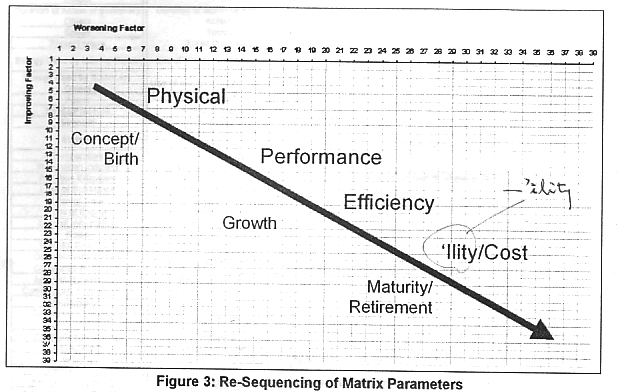
Figure 3: Re-Sequencing of Matrix Parameters
The full list of parameters in the new Matrix and some of the detailed definition underlying how we placed different solutions into the different classifications is illustrated in Figure 4 below.
The new colour-coded categories are:-
Green - Physical Parameters
Purple - Performance Related Parameters
Yellow - Efficiency Related Parameters
Blue - ‘ility (reliability, durability, etc) Related Parameters
Grey - Manufacture/Cost Reduction Parameters
Pink - Measurement Parameters (Special Category)
| Color | New parameter | Old parameter | Comments |
| Green
|
|
Weight of moving object | Weight of moving object | Understand the grouping for geometrical properties. |
| Weight of stationary object | Weight of stationary object | ||
| Length/angle of moving object | Length of moving object | ||
| Length/angle of stationary object | Length of stationary object | ||
| Area of moving object | Area of moving object | ||
| Area of stationary object | Area of stationary object | ||
| Volume of moving object | Volume of moving object | ||
| Volume of stationary object | Volume of stationary object | ||
| Shape | Shape | ||
| Amount of substance | Amount of substance/matter | ||
| Amount of information | Information | ||
|
| | | | | | | | | | | | | | |
Duration of action of moving object | Duration action of moving object | Here definitely a 'time' related parameter -- not 'durality' as in some translations of the clasical Matrix |
| Duration of action of stationary object | Duratio of action by stationary object | same as above | |
| Speed | Speed | Includes velocity and process time | |
| Force/Torque | Force (intensity) | ||
| Energy used by moving object | Use of energy by moving object | Relates to performance and 'amount', and specifically not efficiency or 'loss' | |
| Energy used by stationary object | Use of energy by stationary object | same as above | |
| Power | Power | ||
| Stress/Pressure | Stress or pressure | ||
| Strength | Strength | ||
| Stability | Stability of the object's composition | Intended to be more general than 'composition' -- which implies chemistry | |
| Temperature | Temperature | ||
| Illumination intensity | Illumination intensity | Include 'brightness' | |
| Yellow
| | | | | | | |
Function efficiency | Intended to help focus on function of whatever form | |
| Loss of substance | Loss of substance | ||
| Loss of time | Loss of time | ||
| Loss of energy | Loss of energy | ||
| Loss of information | Loss of information | ||
| Noise | |||
| Harmful emissions | |||
| Other harmful effects gnerated by system | Object-generated harmful factors | Anything harmful not specifically covered in the preceding parameters | |
| Blue
| | | | | | | | | | | Blue |
Adaptability/versaability | Adaptability or versability | |
| Compatibility/ connectability | |||
| Transportability | |||
| Trainability/operability/ controllability | Ease of oeration | ||
| Reliability/robustness | Reliability | ||
| Repairability | Ease of repair | ||
| Security | Anything to do with security | ||
| Safety/vulnerability | |||
| Aesthetics/appearance | An emerging parameter -- still not too many examples | ||
| Other harmful effects acting on system | Object-affected harmful factors | Anything harmful not specifically covered in the preceding parameters in this category | |
| Grey
| | | | | Grey |
Manufacturability | Ease of manufacture | |
| Manufacture precision/consistency | Manufacturing precision | ||
| Automation | Extent of automation | ||
| Productivity | Productivity | ||
| System compleity | Device complexity | ||
| Control complexity | |||
| Pink | Ability to detect/measure | Difficulty of detectingand mesuring | |
| Measurement precision | Measurement accuracy | new title includes 'accuracy' |
Figure 4: Revised List of Matrix Parameters
4. Examples of Changes to Matrix Content
By way of illustrating some of the changes that have taken place in
the time between the production of the original Matrix and this one, we
present below two specific cases from the Matrix. In the first case, we
examine one of the most commonly used conflict situations – the perennial
fight between strength and weight – in order to illustrate the potential
significance of the findings that have populated the new Matrix. In the
second case, we describe one of the more extreme changes that we see having
taken place between original and the new Matrix.
4.1 Strength versus Weight
Figure 5 illustrates a before and after comparison of the Classical Matrix entry for the strength versus weight (of stationary object) versus the findings of the research into more recent patents.
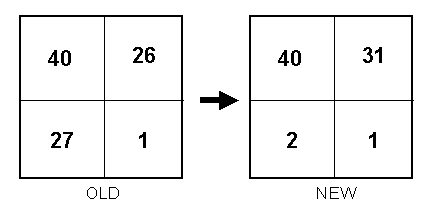
Figure 5: Revised Strength versus Weight Entry in Matrix
The continuing use of Composite Materials (Principle 40) as a means of challenging the conflict is apparent in many patents, and in fact the number of patents using this Principle is around double those of the nearest other Principle. This phenomenon is probably self-re-enforcing in that there is now a broad awareness of the benefits of these materials and an industry of manufacturers intent on selling them into new applications.
Principle 31 – Porous Materials – on the other hand did not feature in the classical Matrix, but finds itself as the second most commonly deployed strategy for improving strength/weight ratio. Although the resolution of conflicts by adding holes is very TRIZ-like in its philosophy – ‘doing more with less’ – we are more inclined to attribute the increase in use of this strategy in inventions to the increasing awareness of how nature uses the ‘add holes’ strategy to solve similar conflicts. See also the TRIZ and Biology project at the University of Bath for other examples of the use of holes to improve strength/weight ratio at Reference 3.
By way of an example of Principle 31 in action to solve a strength/weight conflict, Figure 6 illustrates an elegant solution used in US6,162,962
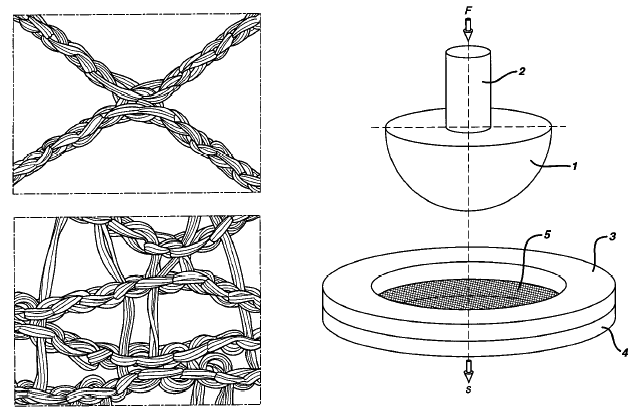
Figure 6: Example of System Using Principle 31 To Improve Strength/Weight
Ratio
US Patent 6,162,962
The invention relates to a medical device, an areal implant used in operations to assist abdominal wall closure. As is the convention during the cataloguing of research we read the invention disclosure text in order to highlight the contradictions being challenged by the invention for ease of reference:-
During an operation in the abdominal region, it is often necessary to strengthen the abdominal wall using an inserted areal implant. It is known to use nets made from the non-resorbable plastics polypropylene or polyester or from the slowly resorbable polyglactin 910 (a copolymer of glycolide and lactide in the ratio 9:1) for such implants. Metallic implants are also used. The known implant nets have some disadvantages. For example, they are relatively heavy, i.e. the areal weight is as a rule more than 50 g/m.sup.2 and predominantly even ca. 100 g/m.sup.2. If the implants are not resorbable, a relatively large quantity of foreign substance thus remains permanently in the body.
In this case it was also apparent that the words ‘porous’ or ‘holes’ were not mentioned in the context of the actual resolution to the strength/weight conflict used by the inventors. The recognition that holes formed an integral part of the solution had to be gleaned from the figures contained within the disclosure – Figure 6.
This fact – by no means uncommon – represents a case against the use
of computer analysis of text. A semantic processor, for example, would
not have identified this patent as one using Inventive Principle 31.
4.2 Shape versus Stability
The shape versus stability entry in the new Matrix is most striking because in terms of the top four most commonly used Inventive Principles used to challenge this conflict in recent times there is no common ground with the recommendations found in the classical Matrix – Figure 7. Lack of data concerning the detailed make-up of the classical Matrix makes it impossible to fully understand whether the new Matrix is ‘better’ or ‘worse’ than the original. All that we are able to say with any precision is that during the ranking of Principles our research has taken into account the Level of Invention, and that the quality of Inventions we have observed using the new Principle recommendations is considerably higher than the patents we have observed using the old recommendations.
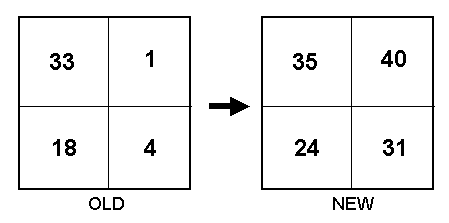
Figure 7: Revised Strength versus Weight Entry in Matrix
5. Contradiction Matrix For Software Problems
A lack of relevance of many of the parameters used to make up the axes
of either the classical or new Matrix to software problems (weight, length,
area, shape, volume, temperature for example) has prompted many users to
ask us for a bespoke Matrix specifically for software problems. In researching
the possibilities for such a Matrix we have had to conduct an analysis
of both patents and (outside the US – where patents on software are not
permitted) examples from journals and trade literature to establish whether
the concept of conflict elimination was being practiced at all. Very soon
into this research in fact, although in the case of patents the level of
Invention is generally very low, it became clear that all 40 Inventive
Principles are being used to challenge conflicts, and that there were certain
emerging patterns of usage that meant construction of a new Matrix was
going to be possible. The final public form of the new – currently 22x22
Matrix will be published elsewhere (Reference [4]).
6. The Ideal Contradiction Matrix
The recent announcement of our collaboration with Ideation on the production of an expanded and updated version of the technical contradiction matrix, plus the ongoing creation of the above outlined matrix specifically aimed at software applications, plus the expanding use of our matrix for business problems has prompted a number of questions about our longer term strategy.
What we are in fact experiencing with this apparent proliferation of Matrices is one of the fundamental trends described within TRIZ – that of increasing complexity followed by decreasing complexity. Or rather increasing number of components followed by decreasing number of components (see Reference 5 for more details on why the difference between these two is important). The increasing number of Matrices, then, is simply a system in the first half of the trend – Figure 8.
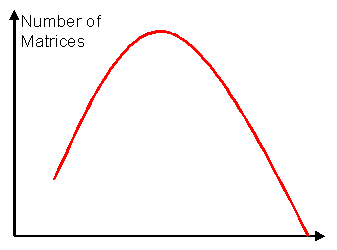
Figure 8: Number of Components Trend in Relation To TRIZ Contradiction Tools
Why do we expect this characteristic to be relevant to the evolution of the Contradiction Matrix -- There are several answers to this question. The first relates to the needs and desires of users of the Matrix: for a long time, the classical Contradiction Matrix has been viewed as a ‘good enough’ or ‘sufficient’ tool (albeit some TRIZ researchers have since walked away from the concept completely). But then when the business community began to become interested in TRIZ, it very quickly became apparent that the conceptual elegance of the Matrix was not matched by its relevance to typical business situations. This phenomenon was the main spur for us to create the Business Matrix. Subsequently, we have seen similar problems in the software development sector; here too, people have been attracted to the conceptual elegance of the concept, and then disappointed when they find it difficult to relate their particular problems to the generic parameters contained in the Matrix. As a consequence, we have also taken it upon ourselves to construct the above outlined matrix tailored specifically to the needs of the software sector.
While not being ‘new’ in the same terms, we are also expecting the Matrix concept to expand further when other sectors (and in some instances, individual companies) ask us to produce a bespoke Matrix for a particular field. In the majority of cases, these bespoke Matrix tools will be subtle variants on the technical, business and software Matrix tools with parameters reframed in the terminology and jargon of a client. In other cases, we will simply be deleting lines from a Matrix in order to take-out parameters that are considered irrelevant to a given type of situation (the legal sector, for example, has generally speaking very little interest in R&D, at least not in those words).
It is important to recognize, of course, with any of these specialized matrices, that we are not trying to filter out the ability of TRIZ to transfer ideas from one sector to another, but merely to make it easier for users to translate their specific problem into the generic problem – Figure 9. Beyond that, it is the job of the Matrix to identify the best generic solutions from across all fields that may be used to help solve the specific problem at hand.
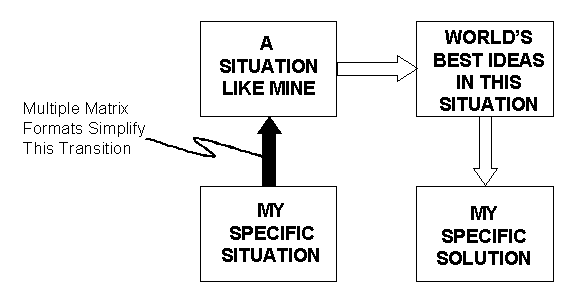
Figure 9: Multiple Matrices Help Make the Transition From Specific To Generic Problem
So then, what about the second half of the component count trend curve -- What about the ideal Contradiction Matrix -- The ideal Matrix is the one that presents the users with the best generic solutions without the Matrix actually having to exist at all. At least it should not exist as far as the user is concerned. In effect, the Ideal Matrix would offer the shortcut illustrated in Figure 10.
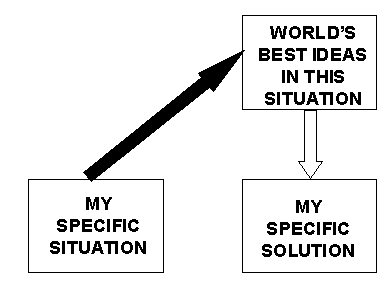
Figure 10: The Ideal Matrix… Is No Matrix
We are beginning to see the emergence of this Ideal Matrix in our ‘Contradiction Finder’ tool. You will find a free version of this tool on the CREAX website as well as inside the latest versions of CreaTRIZ – Figure 11.

Figure 11: Contradiction Finder Software
The basic idea behind the Contradiction Finder is that eventually users of any background will simply be able to enter the description of a problem in their own language and jargon. An appropriate algorithm will then analyse this input and provide the most appropriate generic solutions – whether they be Inventive Principles, Inventive Standards, Trends of Evolution or Knowledge/Effects.
So why not just go straight to this ideal final result you might be
asking? The answer lies in the fundamental phenomena underlying the increasing-decreasing
complexity trend. It is simply that without working having worked out the
‘right’ routes from specific problem to right generic solution, it is not
possible to eliminate the Matrix. Put another way, it is only by acquiring
the data to populate the various different Matrices that we will acquire
sufficient data to ensure we are making effective recommendations when
a user types in their problem. The proliferation, to put it yet another
way, is an essential requirement along the road to a more ideal system.
References
[1] Mann, D.L., Dewulf, S., ‘Updating
TRIZ – 1985-2002 Patent Research findings’, paper presented at TRIZCON’03,
Philadelphia, March 2003.
[2] Mann, D.L., Dewulf, S., Zlotin,
B., Zusman, A., ‘Matrix 2003: Updating the TRIZ Contradiction Matrix’,
CREAX Press, February 2003.
[3] Vincent, J.F.V, Mann, D.L.,
‘TRIZ and Biology – Naturally Smart TRIZ’, paper presented at TRIZ Future
conference, Bath, November 2001.
[4] Mann, D.L., Dewulf, S., Hey,
J., ‘Conflict and Trade-Off Elimination Tools for Software Developers’,
paper to be published, destination unknown at this point in time.
[5] Mann, D.L., ‘Complexity Increases
And Then…(Thoughts From Natural System Evolution)’, TRIZ Journal, January
2003
PS.
Editor's Note (Toru Nakagawa, Apr. 15, 2003)
In my Personal Report of TRIZCON2003, I reviewed this paper and the second paper as follows:
The two papers by Darrell Mann and Simon DeWulf (CREAX, Belgium) [27], [28] are the most important accomplishment in the present Conference. Ref. [27] is "Updating TRIZ: 1985-2002 Patent Research Findings". It is well known that TRIZ was founded and extended by Altshuller through his intensive analysis of patents. However, such patent analysis was done mostly in 1970s to around 1985, and newcomers of TRIZ often complain that various examples in TRIZ are somewhat old-fashioned. In this context, CREAX company started a large researcch program to analyze all the US patents granted during the period from 1985 to the present, with the aim of re-establishing the whole TRIZ principles and knowledge base. They operate a laboratory in India with 25 full-time patent analysts and have analyzed about 150,000 patents so far since 2000.It is also my pleasure to tell you that the Japanese translation of Darrell Mann's Textbook, "Hands-On Systematic Innovation", is currently under progress. As a result of collaboration by nearly-20 voluntary engineers in Japanese TRIZ community, the first manuscripts of the whole volume have already been prepared, with the hope of publishing it in October, 2003.Professional patent analysts of various specialty fields were trained with TRIZ concepts and the framework of the present analysis. Then they reviewed the patents one by one, to evaluate its Level of Invention (according to Altshuller's criteria), and (after excluding the lowest-quality patents) to clarify the following items in parallel.
(1) Contradictions identified/solved by the Inventor, and Inventive Principles used for solving the problem.
(2) In a single composite evolutionary potential radar plot, the status of the problem and the status of the solution. Any emerging new trend, if identified.
(3) Physical, chemical, or biological effects employed to solve the problem.
(4) Inventive Standards used in the solution generation, or any new candidate of Inventive Standards.
All these findings were recorded in a fixed format in PC, together with the identification of the patent and its human extracted abstract. The quality of this progam certainly depends on the analysists' consistent understanding of TRIZ concepts, program framework, and individual patents. About 10 patents can be processed by one researcher per day, the Author says.Accumulation of the findings of this program has been reflected partly in Darrell Mann's textbook "Hands-On Systematic Innovation" (CREAX, 2002), and will be published in various other forms in the near future.
Ref. [28], "Updating the Contradiction Matrix", introduces the first aspect of the results obtained in the above program. Altshuller's Contradiction Matrix has been completely remodelled with improved framework and modern data! The parameters of the matrix are re-defined and extended into 50 (as the results of intensive discussions with user community). The results of the patent analysis reported above in [27] are expressed in the familiar format of Altshuller's Matrix with updated data and also in a new format called Matirx Explorer. It is announced that a new book "Matrix 2003: Updating the TRIZ Contradiction Matrix" (coauthored by D. Mann, S. DeWulf, B. Zlotin, and A. Zusman) will be published in April, 2003.
Changes in Matrix contents are demonstrated in some examples in the paper. It is also demonstrated that the Contradiction Matrix is readily customizable to any specific field of application. Thus, for example, the Matrix specifically for software development problems will be made as a 22x22 Matrix and will be published in a booklet.
These papers [27, 28] are based on so much eraborate work and important for modernizing and proliferating TRIZ. They will be posted in CREAX Web site, in TRIZ Journal, and soon in this "TRIZ Home Page in Japan" both in English and in Japanese translation under the author's permission.
| "Updating TRIZ: Patent Analysis", Mann and DeWulf | CREAX Web site | TRIZCON2003, Nakagawa's Personal Report | Japanese
page of this paper |
Last updated on Apr. 16, 2003. Access point: Editor: nakagawa@utc.osaka-gu.ac.jp